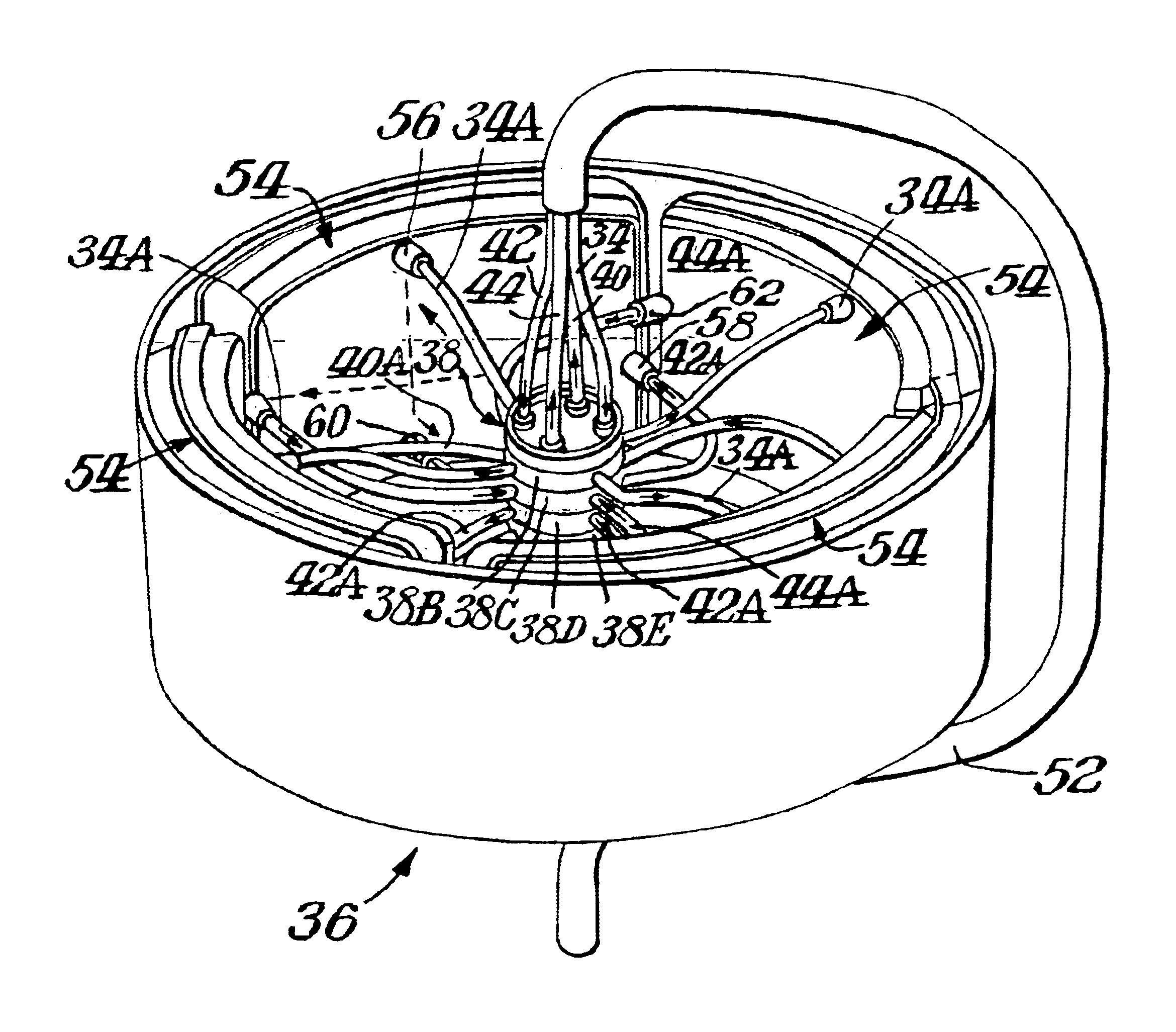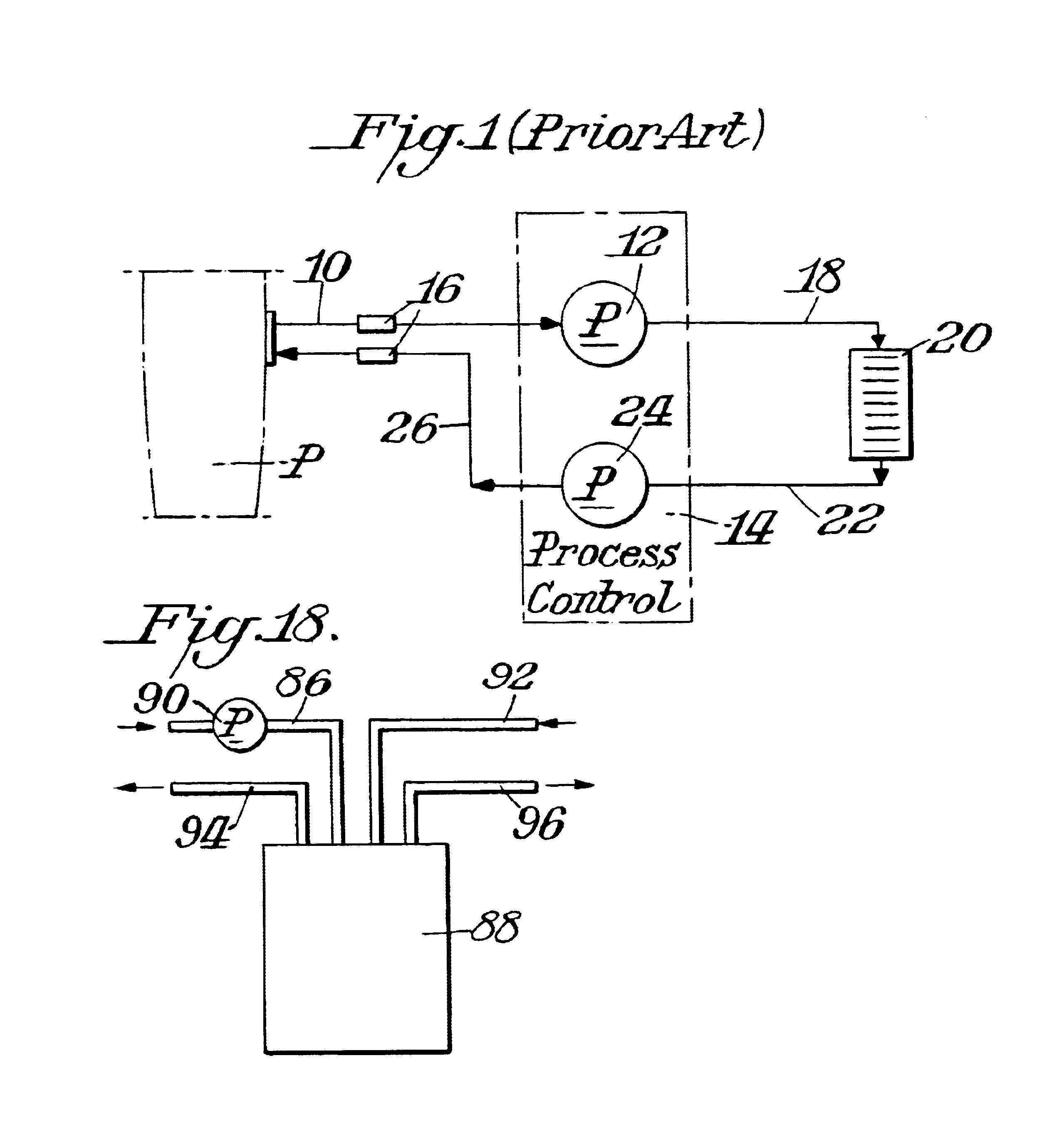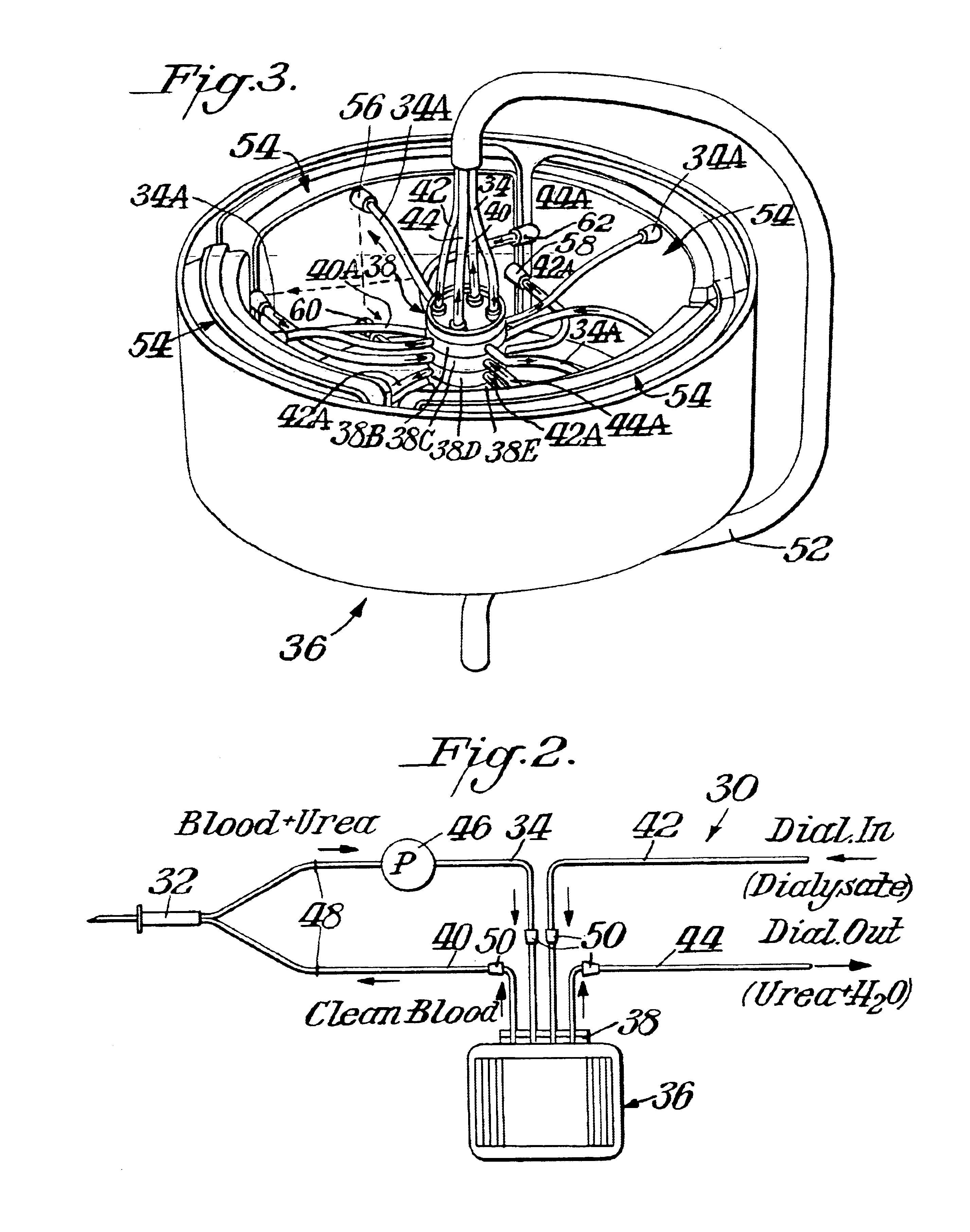Spin-hemodialysis assembly and method
a technology of hemodialysis and assembly, which is applied in the direction of centrifuges, separation processes, filtration separation, etc., can solve the problems of many responses, poor substitute for kidney function of man-made membranes, and high cost of patient care, so as to reduce the time required for blood purification and reduce the effect of life-threatening consequences
- Summary
- Abstract
- Description
- Claims
- Application Information
AI Technical Summary
Benefits of technology
Problems solved by technology
Method used
Image
Examples
Embodiment Construction
FIG. 1 represents a current prior art hemodialysis assembly. As shown therein a tube 10 is connected to the chest or arm of a patient P. A pump 12 in a process control 14 withdraws whole blood from the patient P into tube 10. The whole blood passes through a bacteria filter 16, to process control 14 and then is removed from the process control 14 through tube 18 which leads to a dialyzer 20. Dialyzer 20 may be, for example, a component commercially available from such companies as Baxter, Gambro and Fresenius. The whole blood is treated to remove contaminants in dialyzer filter 20 and the blood is then conveyed through tube 22 by means of pump 24 in process control 14. The blood is then returned to the patient P through tube 26 which incorporates a further bacteria filter 16.
The dialyzer 20 removes urea molecules from the plasma via Donan dialysis. Because, however, the red cells and the white cells or leukocytes are present, this process is hazardous in particular for the red cells...
PUM
| Property | Measurement | Unit |
|---|---|---|
| time period | aaaaa | aaaaa |
| distance | aaaaa | aaaaa |
| distance | aaaaa | aaaaa |
Abstract
Description
Claims
Application Information
 Login to View More
Login to View More - R&D
- Intellectual Property
- Life Sciences
- Materials
- Tech Scout
- Unparalleled Data Quality
- Higher Quality Content
- 60% Fewer Hallucinations
Browse by: Latest US Patents, China's latest patents, Technical Efficacy Thesaurus, Application Domain, Technology Topic, Popular Technical Reports.
© 2025 PatSnap. All rights reserved.Legal|Privacy policy|Modern Slavery Act Transparency Statement|Sitemap|About US| Contact US: help@patsnap.com



